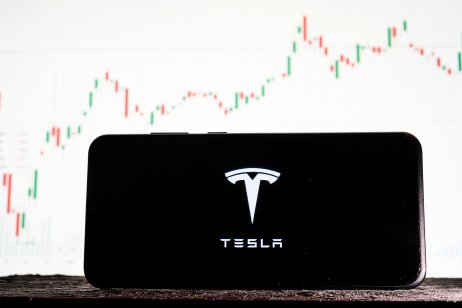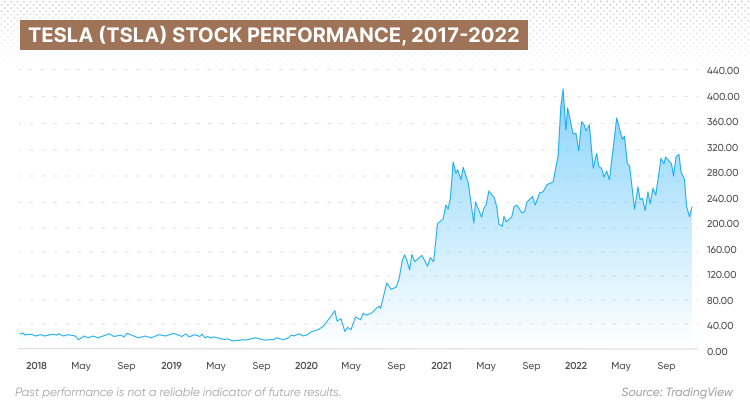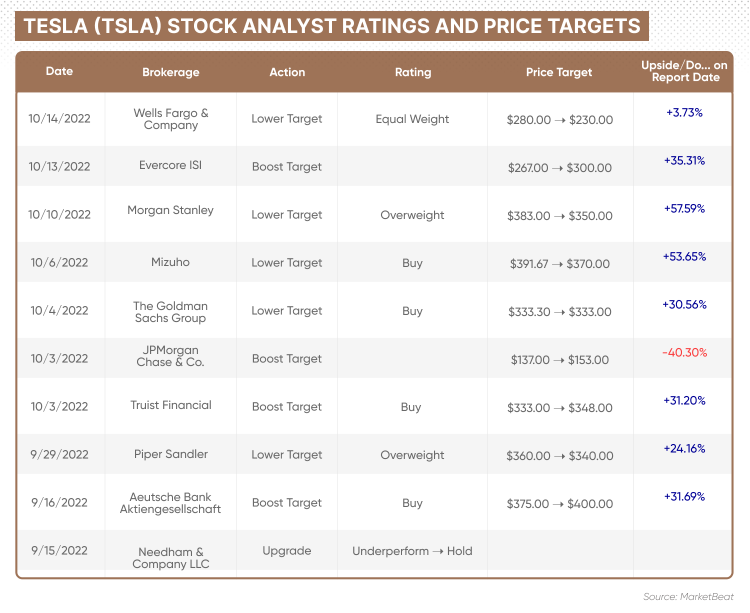Tesla stock forecast: Q3 earnings release and share price wobble

Tesla (TSLA) posted record third-quarter revenue but missed Wall Street’s previous estimates. So far this year the electric carmaker has battled with supply shortages, rising costs and fewer deliveries than expected.
Tesla is rapidly ramping up production of its electric cars but spending on new factories in Berlin and Texas, together with battery production issues, have squeezed the company’s margins.
The results come after an announcement on 2 October that the electric carmaker has produced over 365,920 vehicles and delivered more than 343,830 over the third quarter. However, this has led to speculation that the company is unable to maintain demand – in short, the company produced about 22,000 more vehicles than it delivered.
Although this represents a new record for deliveries, logistical bottlenecks caused by the shutdown of a factory in China, and the opening of new ones, will weigh heavily on Q4’s projections.
Elon Musk reiterated on the earnings call on 20 October that there was “excellent demand” for the fourth quarter.
Tesla also came out with impressive quarterly earnings of $1.05 per share (EPS attributable to common stockholders non-GAAP), beating the Zacks Consensus Estimate of $0.95 per share.
According to an article published by Nasdaq: “This quarterly report represents an earnings surprise of 10.53%. A quarter ago, it was expected that this electric carmaker would post earnings of $0.61 per share when it actually produced earnings of $0.76, delivering a surprise of 24.59%. Over the last four quarters, the company has surpassed consensus EPS estimates four times.”
What could be expected from the TSLA stock price in the next few months and years? Will it manage to recover from the recent dip?
In this article, we discuss some of the latest developments affecting the stock’s price action and look at some Tesla stock predictions from analysts and third-party forecasting services.
Tesla stock news: Catalysts and major price drivers
So far this year, Tesla stock has suffered a 44% loss amid the confluence of some major negative catalysts.
However, there had been some easing in July. The gains occurred after the firm published its production and deliveries report on the 2 July, reporting total deliveries of 254,695 units along with 258,580 vehicles produced.
In addition, the company released its previous quarterly earnings report on 20 July and made the headlines as it got rid of 75% of its bitcoin holdings – a move that netted the firm a total of $936m in cash.
In the latest Q3 earnings call, Elon Musk said he believes the company is primed for one track for a record Q4. The increase in vehicle manufacturing and delivery, as well as battery supply acquisition and assembly and full self-driving on vehicles should help the company to post “record” profits. The Q3 report states:
The third quarter of 2022 was another strong quarter with record revenue, operating profit and free cash flow. In the last 12 months, our free cash flow exceeded $8.9bn. Our operating margin reached 17.2% in Q3. We achieved an industry-leading operating margin while encountering material headwinds YoY. Raw material cost inflation impacted our profitability along with ramp inefficiencies from Gigafactory Berlin- Brandenburg, Gigafactory Texas and 4680 cell production. Also, the US dollar continued to strengthen compared to all other major currencies in our markets.
Additionally, we are reaching such significant delivery volumes in the final weeks of each quarter that transportation capacity is becoming expensive and difficult to secure. As a result, we began transitioning to a smoother delivery pace, leading to more vehicles in transit at the end of the quarter. We expect that smoothing our outbound logistics throughout the quarter will improve cost per vehicle.
Other factors behind the TSLA price dip
Macroeconomic conditions
Central banks – primarily the US Federal Reserve (Fed) – have been raising their benchmark interest rates to respond to elevated inflationary pressures within their economies.
This puts pressure on the valuation of equities as investors adjust their risk premiums upwards. The higher these premiums are, the lower the valuation will be assuming that cash-flow projections remain unchanged.
These hawkish policies from central bankers are concerning investors as they could lead to the beginning of a recessionary cycle. For automobile manufacturers like Tesla that could mean lower demand for the vehicles they sell. Moving forward, surprises from the Fed remain one of the biggest threats to the recovery of Tesla’s share price – and the wider economy.
Higher interest rates
Higher interest rates increase the cost of vehicle purchase for consumers and that may also weigh on the demand outlook.
Lockdowns in China
China imposed strict lockdowns on a couple of big cities back in March and this measure forced Tesla to shut down its manufacturing operations there. This put additional downward pressure on Tesla stock price on concerns over production and delivery in the upcoming months.
All these headwinds contributed to the negative performance of TSLA stock so far this year (as of 20 October). Depending on how these situations evolve could impact the Tesla stock predictions for the next 12 to 24 months.
Tesla fundamental analysis: Q2 and Q3 earnings
Tesla reported its financial results covering the second quarter of the 2022 fiscal year on 20 July. Over the three months that ended on 30 June, Tesla’s revenues landed at $16.93bn, resulting in a 42% year-on-year jump. This positive performance was primarily led by a significant uptick in automotive revenues.
The company’s GAAP earnings per share experienced a 91% year-on-year jump and ended the quarter at $1.95 on a fully diluted basis while Tesla produced free cash flows of $621m during the quarter – $2m more than what the firm generated during Q2 2021.
The Q3 earnings report was slightly more chaotic: the bottom line figures do not seem to quell investor anxiety. Although sales at Tesla hit a fresh high in the latest quarter, high raw material costs and a stronger dollar have disappointed Wall Street. Profits have climbed, but revenue has faltered and over the course of the trading period on the day of the report, shares plummeted by 5%.
Musk also commented on the controversial Twitter purchase. He had previously said there was no “obvious” overlap or competitive advantage in combining Tesla, SpaceX, Neuralink and Twitter into the same operating structure:

Tesla stock projection: Analysts’ view
According to Seth Goldstein, equity analyst at Morning Star: “After incorporating Tesla’s preliminary third-quarter deliveries into our model, we reduce our fair value estimate to $250 per share from $255. Our narrow moat rating is unchanged. The reduction comes from our outlook for lower near-term vehicle deliveries than we had previously forecast
“Tesla reported preliminary third-quarter deliveries of 343,830, which is an all-time high. Reuters reported Tesla aims to produce around 495,000 vehicles in the fourth quarter. This would put Tesla at a little over 1.42 million deliveries for the year, which is below our previous forecast of 1.49 million.
“While management cited logistics issues that slowed end-of-quarter deliveries, we think this reflects the challenges ramping up production at its two new factories as well as restarting the Shanghai plant after the Covid-19 lockdowns during the second quarter.”
On the bright side, Goldstein commented, “We see no long-term issues that would affect production. Separately, our key takeaway from Tesla’s AI day was that the company continues to make progress on its autonomous technologies. This year’s AI day largely showcased the progress the company has made over the past year since its initial AI day last August. The company’s autonomous driving software continues to make progress, and we think the Level 3 version could be ready for subscription sales in the next couple of years.”
Tesla stock forecast: Targets for 2022-2025
Is Tesla stock a ‘buy’, ‘sell’ or ‘hold’? The consensus recommendation for Tesla stock as per analysts surveyed by MarketBeat was ‘hold’, as of 20 October. A total of 19 out of 36 analysts rated TSLA a ‘buy’, seven gave it a ‘sell’ rating and 10 recommended ‘hold’.
The average 12-month TSLA stock price target stood at $275.68. Analysts’ highest Tesla stock projection was $526.67 and the lowest was $33.33.
 According to Tesla stock forecast 2022 from WalletInvestor, as of 20 October, TSLA could end the year at $256.07.
According to Tesla stock forecast 2022 from WalletInvestor, as of 20 October, TSLA could end the year at $256.07.
Looking forward, the algorithm-based forecasting service estimated the stock to move towards the $361.82 mark by the end of 2023 and $470.99 by the end of 2024.
Its Tesla stock forecast for 2025 expected the stock to trade at $577.31 by the end of the year. According to its five-year Tesla share price forecast, the stock could hit $746.67 in October 2027. Wallet Investor didn’t provide a TSLA stock forecast for 2030.
When looking at Tesla (TSLA) stock projections, it’s important to remember that analysts’ and algorithm-based predictions can be wrong. They are based on an analysis of the TSLA share-price history. Past performance never guarantees future results.
It’s important to do your own research, read the latest EV market news and conduct Tesla chart analysis. Your decision to trade depends on your attitude to risk, your expertise in the market, the spread of your portfolio and how comfortable you feel about losing money. You should never trade more than you can afford to lose.
FAQs
Is Tesla a good stock to buy?
Tesla is a pioneer in the manufacturing of electric vehicles and it is making its way to become the leading player in the autonomous vehicle segment. Whether Tesla stock is a suitable asset for you should depend on your own research and risk tolerance. You should never trade more than you can afford to lose.
Will Tesla stock go up or down?
No-one can say for sure. The consensus view of analysts, as of 20 October, compiled by MarketBeat was that the TSLA stock could rise to $283.90 over the next 12 months. However, analysts’ price targets can be wrong. It’s crucial you form your own opinion before making any trading decision.
Should I invest in Tesla stock?
The decision to invest in Tesla stock should only be made once proper due diligence has been performed and based on each trader’s unique risk tolerance, financial goals, income, employment situation, and other similar factors. You should never trade more than you can afford to lose.
Markets in this article
Related topics



